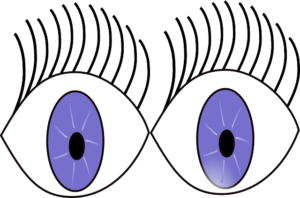Amaxophobia is a type of anxiety disorder that is characterized by an intense fear of driving or riding in a vehicle. This fear can be so severe that it can interfere with a person’s daily life, making it difficult for them to travel to work, school, or other important places. Amaxophobia is also known as vehophobia or motorphobia.
According to the Anxiety and Depression Association of America, approximately 12.5% of Americans experience specific phobias at some point in their lives, and amaxophobia is one of the most common specific phobias. It affects people of all ages and genders, and can develop at any time in a person’s life.
 It is important for individuals who experience amaxophobia to seek treatment, as this condition can significantly impact their quality of life and limit their ability to participate in activities they enjoy.
It is important for individuals who experience amaxophobia to seek treatment, as this condition can significantly impact their quality of life and limit their ability to participate in activities they enjoy.
Understanding the Causes of Amaxophobia
There are several factors that can contribute to the development of amaxophobia. Traumatic experiences, such as car accidents or witnessing accidents, can lead to a fear of driving or riding in vehicles. Genetics may also play a role, as some people may be more predisposed to anxiety disorders.
Environmental factors, such as growing up with parents who have a fear of driving or experiencing high levels of stress or anxiety in daily life, can also contribute to the development of amaxophobia.
Additionally, individuals who have other anxiety disorders, such as panic disorder or social anxiety disorder, may be more likely to develop amaxophobia.
Identifying the Symptoms of Amaxophobia
The symptoms of amaxophobia can vary from person to person and may include physical symptoms such as sweating, trembling, and rapid heartbeat. Emotional symptoms may include feelings of panic or dread when faced with the prospect of driving or riding in a vehicle. Behavioral symptoms may include avoiding driving altogether or only driving in certain situations.
Individuals with amaxophobia may also experience anticipatory anxiety, which is anxiety that occurs in anticipation of a feared situation. For example, a person with amaxophobia may experience anxiety days or even weeks before they are scheduled to drive or ride in a vehicle.
Overcoming Amaxophobia Through Cognitive Behavioral Therapy
Cognitive behavioral therapy (CBT) is a type of therapy that has been shown to be effective in treating anxiety disorders, including amaxophobia. CBT focuses on identifying and changing negative thought patterns and behaviors that contribute to anxiety.
During CBT sessions, individuals with amaxophobia work with a therapist to identify their specific fears and develop coping strategies to manage their anxiety. This may include exposure therapy, which involves gradually exposing the individual to the feared situation in a controlled environment.
Studies have shown that CBT can be highly effective in treating amaxophobia, with success rates ranging from 60-90%.
Exploring Other Treatment Options
In addition to CBT, there are other treatment options available for individuals with amaxophobia. Exposure therapy, which involves gradually exposing the individual to the feared situation in a controlled environment, can be effective for some people.
Medication, such as anti-anxiety medications or beta-blockers, may also be prescribed to help manage symptoms of anxiety. Hypnotherapy and alternative therapies such as acupuncture or meditation may also be helpful for some individuals.
It is important for individuals with amaxophobia to work with a mental health professional to determine the best course of treatment for their specific needs.
Developing a Support System
Having a strong support system can be helpful for individuals with amaxophobia as they work towards recovery. This may include family members, friends, or support groups.
It is important for individuals with amaxophobia to communicate their needs and fears to their support system so that they can provide appropriate support and encouragement.
Taking the First Step Towards Recovery
Taking the first step towards recovery from amaxophobia can be difficult, but it is an important step towards regaining control of one’s life. Finding a therapist who specializes in anxiety disorders and scheduling an appointment is a good first step.
Individuals should also prepare for their first session by writing down their specific fears and concerns, as well as any questions they may have for the therapist.
Amaxophobia can significantly impact a person’s quality of life, but there are effective treatments available to help individuals overcome their fears. Seeking treatment, developing a support system, and taking the first step towards recovery are all important steps in managing amaxophobia and regaining control of one’s life.
